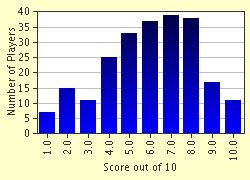Quiz Answer Key and Fun Facts
1. The invention of this art movement is credited to Allan Kaprow, who coined the term for it in 1959. Which movement was this?
2. In which country did a group of artists who called themselves the 'Heidelberg School' gather together in the late 19th century?
3. The vanishing point on a painting can be found on which 'H' line?
4. The 'High Renaissance' occurred during approximately which period in history?
5. What is the term for the technique in which the artist applies spaced, parallel lines to indicate shading in a certain region in a drawing, engraving even a painting?
6. The final layer of plaster upon which a fresco painter begins his painting is called which of these?
7. This term, which means 'image' or 'likeness' in Greek, is used to describe portrait paitings of saintly figures, Christ or the Virgin Mary during the Byzantine and Russian Orthodox schools of art. What is this 'I' word?
8. The term 'Impressionism' was original applied derisively to the works of the various members of that group after they first exhibited in Paris in 1874. After which Impressionist painter's work was this term applied?
9. Which of these terms refers to a relatively thick layering of opaque paint upon a canvas, wherein the marks of the application instrument (brush, knife, etc.) may still be seen clearly?
10. True or false: India ink originated in India.
Source: Author
thejazzkickazz
This quiz was reviewed by our editing team before going online.
Any errors found in FunTrivia content are routinely corrected through our feedback system.

